Many of our wildlife creatures today gave me a lot of trouble when it came to identification.
I spent hours looking all over the web. Normally I try a Google image search. This time, for the first butterfly in this series, it suggested a search for “short-tailed blue”
Unfortunately, this type of butterfly looks too different, and I ended up spending 2 hours trying to figure it out.
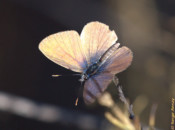
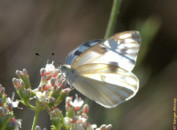
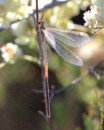
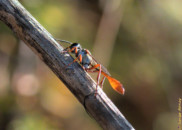
Now I can tell you, I believe it is a long-tailed blue. But, if you research this butterfly, you will discover that pictures shows it to be bluer than mine, and they also have tiny little tails on the wings. And that’s why it took me so long to figure it out. This particular individual is probably old. It seems that the bottom of the wing is missing a piece. The blue color has probably faded some, and I took the picture late in the day when the sun was low on the horizon. This gives a reddish tint to everything. Anyway, I have another picture (not good enough to share) with wings closed which shows the 2 dots on the back wings.
Next we have a cabbage white butterfly. According to Wikipedia, this small butterfly was accidentally imported from Europe to Canada around 1860, and quickly spread through North America. It is considered a pest to crucifer crops such as cabbage, kale, bok-choy and broccoli.
Then we have an unidentified insect. I tried Google images, but it thinks it’s a dragonfly, which it definitely isn’t. Its eyes are too small and it has long and thick antennas. I also tried to find it in a site which has a nice collection of insects found in California. Here is the link, perhaps you can try and see something I missed?
https://www.insectidentification.org/insects-by-state.asp?thisState=California
The last insect is, I think, a great golden digger wasp. I feel very lucky to get this detailed picture. But at the same time, that is another insect which gave me a hard time with identification. If you look for images of that wasp, you will notice that mine looks different, its body is grey, instead of almost black, and the tail is skinnier and not as dark. Well, again, your help is always welcome.
Next we have a male blue grosbeak. This is a rare sight. I have only seen this bird twice, in the same spot and within 3 days, since the beginning of the year. And he was very shy, stayed as far away from me as possible. That’s why I only got the front and the back pictures I am sharing today.
I think it only was here on its migratory path to South America.
Our last creature today is, perhaps the most common lizard in our area: the great basin fence lizard. Although this time I caught one with its prey: a yellow woolly bear caterpillar. Bon appétit!!
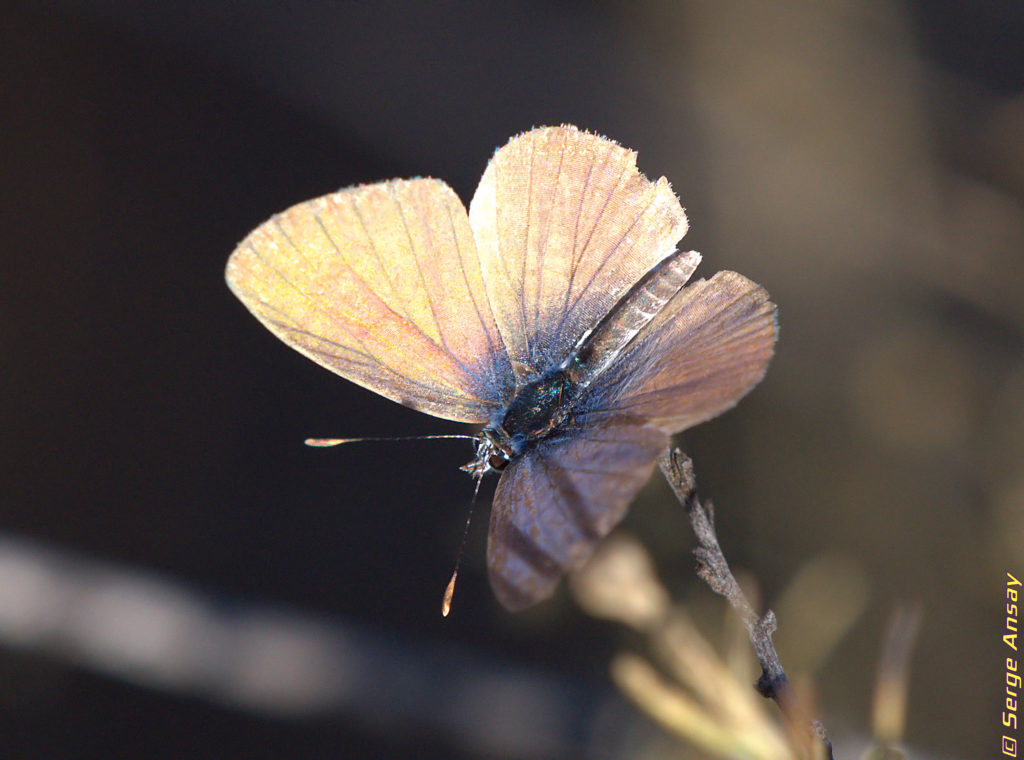




Wow that’s a beautiful wasp. The sun shining through its abdomen is spectacular.
Thank you.
Yes indeed. It was a lucky shot, and the only one I got. It flew away right after I took it.
Serge, great pictures, as always. Thank you for posting and sharing them.
p.s. any coyotes come after you? ?
Hahahah!!
No, but now that you mention it… one night as I was taking pictures of a scorpion on the sidewalk right next to my house, I spotted some movement to my left. I turned and saw a coyote trotting down the sidewalk on the other side of the street. I took a video, I will add it to the next week post.
Love all the pics but the lizard one struck me the most ? great action shot!
Thank you. The way this happened is interesting. I suddenly came upon this lizard after a bend in the trail, and stopped when I saw him. He too froze and dropped his prey. Then, I started taking pictures and he looked at me, obviously trying to assess if I was a threat or not. Then, after a moment he picked up the caterpillar and climbed up on the rock where I took this pic. It was one of those moments where you know you got some good interesting shots.